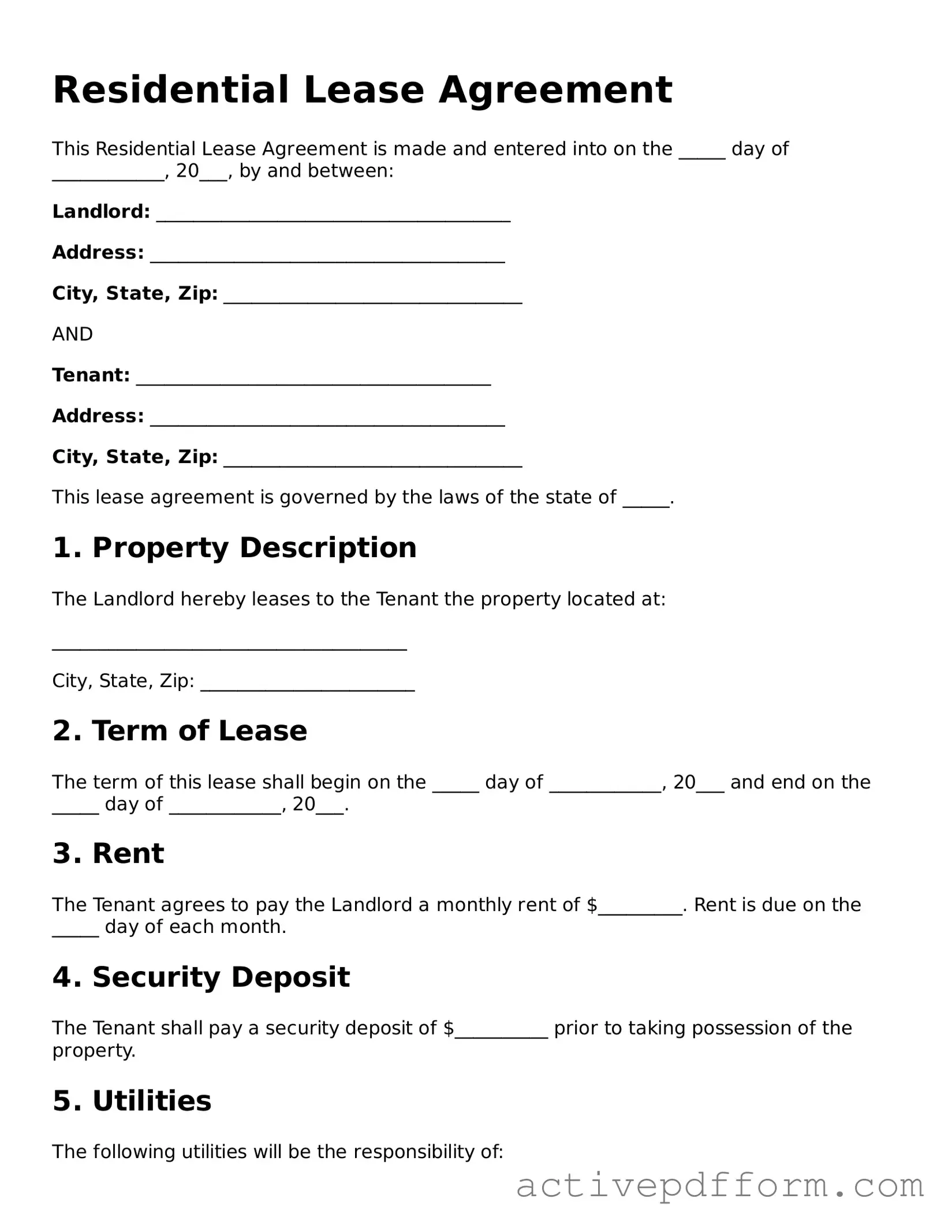Residential Lease Agreement
This Residential Lease Agreement is made and entered into on the _____ day of ____________, 20___, by and between:
Landlord: ______________________________________
Address: ______________________________________
City, State, Zip: ________________________________
AND
Tenant: ______________________________________
Address: ______________________________________
City, State, Zip: ________________________________
This lease agreement is governed by the laws of the state of _____.
1. Property Description
The Landlord hereby leases to the Tenant the property located at:
______________________________________
City, State, Zip: _______________________
2. Term of Lease
The term of this lease shall begin on the _____ day of ____________, 20___ and end on the _____ day of ____________, 20___.
3. Rent
The Tenant agrees to pay the Landlord a monthly rent of $_________. Rent is due on the _____ day of each month.
4. Security Deposit
The Tenant shall pay a security deposit of $__________ prior to taking possession of the property.
5. Utilities
The following utilities will be the responsibility of:
- Landlord: ___________ (e.g., water, gas, electricity)
- Tenant: ___________ (e.g., internet, cable)
6. Maintenance and Repairs
The Tenant agrees to maintain the property and notify the Landlord of any needed repairs.
7. Alterations
The Tenant shall not make any alterations to the property without the written consent of the Landlord.
8. Termination
Either party may terminate this agreement by giving _____ days written notice.
9. Governing Law
This agreement shall be governed by all applicable state laws and regulations. In case of any disputes, they will be resolved in accordance with the laws of the state of _____.
10. Signatures
The parties hereby agree to the terms of this lease by signing below:
Landlord's Signature: ________________________ Date: ____________
Tenant's Signature: _________________________ Date: ____________
In witness whereof, the parties hereto have executed this Lease Agreement as of the day and year first above written.
